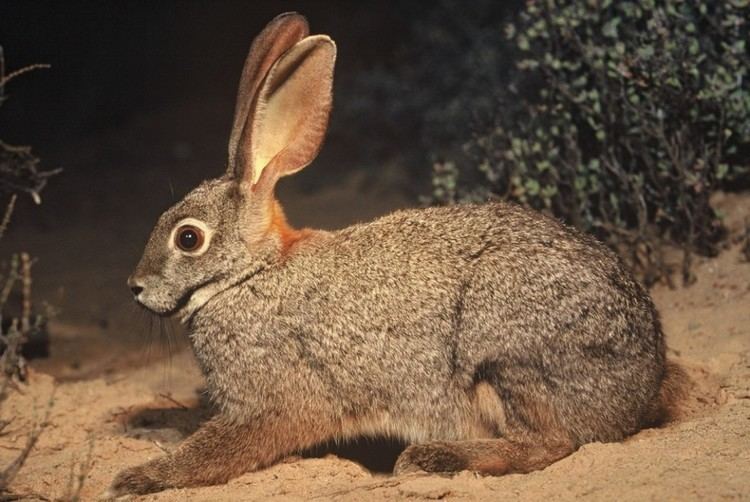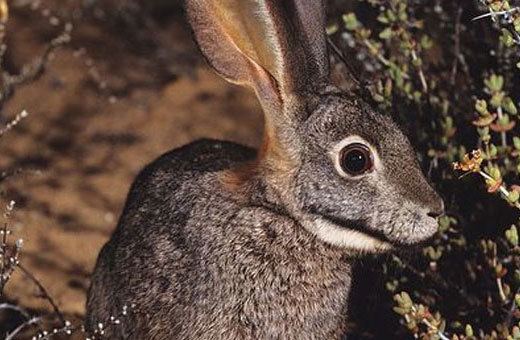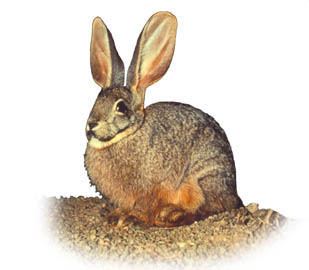Genus BunolagusThomas, 1929 Phylum Chordata Rank Species | Scientific name Bunolagus monticularis Higher classification Bunolagus Order Hares, pikas, and rabbits | |
 | ||
Similar Red rock hare, Nesolagus, Bunyoro rabbit, Volcano rabbit, Natal red rock hare | ||
Riverine rabbits
The riverine rabbit (Bunolagus monticularis), also known as the bushman rabbit or bushman hare, is one of the most endangered mammals in the world, with only around 250 living adults. This rabbit has an extremely limited distribution area, found only in the central and southern regions of the Karoo Desert of South Africa's Northern Cape Province. It is the only member of the genus Bunolagus.
Contents
- Riverine rabbits
- What do riverine rabbits eat
- Identification
- Habitat
- Behaviour
- Reproduction
- In film
- References

What do riverine rabbits eat
Identification

The Riverine rabbit has the general appearance of most rabbits, but the ears and body are longer. It typically has a black stripe running from the corner of the mouth over the cheek, and a white ring around each eye. It has a brown woolly tail, cream or greyish-coloured fur on its belly and throat, and a broad, club-like hind foot. It has a dental formula of 2/1, 0/0, 3/2, 3/3, like other rabbits, with a total of 28 teeth.
Habitat

It is found in only a few places in the Karoo Desert of South Africa's Northern Cape Province, none of them being a protected area. As its name suggest, the Riverine rabbit prefers to occupy river basins and very particular shrubland. The rabbit feeds on the dense shrubland and the soft soil allows for it to create vast burrows and dens for protection, brooding young, and thermoregulation.
Behaviour

Riverine rabbits feed on their favourite foods, flowers, grasses, leaves at night, and rest in forms during the day. A form is a shallow scrape made in the soil under a bush. Two types of droppings are produced. While active during the night the rabbit will produce hard droppings, and during the day droppings are soft, taken directly from the anus, and swallowed. In this way the riverine rabbit obtains vitamin B, produced by bacteria in the hind gut, and minerals such as calcium and phosphorus are recycled.
Reproduction

The Riverine rabbit is polygamous, the male mating with more than one female. Like other rabbits, it bears its young underground for protection. The single offspring that the rabbit produces is born altricial, or bald, blind, and helpless, and weighs from 40 to 50 grams. The Riverine rabbit is the only African rabbit that bears its young underground. The helpless offspring stays with the mother until it is capable of living on its own and fending for itself. The low breeding rate of only one offspring per year is unlike most other rabbits and has led to attempts to increase numbers of this endangered species. A breeding colony has been established at the De Wildt Cheetah and Wildlife Centre near Pretoria.
In film
A riverine rabbit appears in the 2013 animated movie Khumba.
